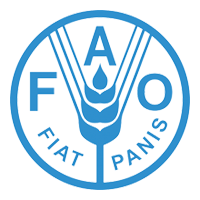Social Media for Enhancing Innovation in Agri-food and Rural Development: Current Dynamics in Ontario, Canada
In this paper, findings suggest that the uptake of social media is still in an early, exploratory phase associated with modest opportunities and relevant limitations of Web 2.0 mediated multi-stakeholder collaboration. Notably, there are gaps in giving and receiving feedback which are intrinsic to dyadic communication as well as innovation processes. Limitations identified include (a) conflicting perceptions among stakeholders about the use, risk, credibility and institutional incentives associated with social media, and (b) lack of capacity that enables use and development of appropriate social media applications. The paper concludes by summarizing the importance of autonomous, user-oriented applications of Web 2.0 tools in agri-food and rural systems.
Related Resources

FairTrade’s theory of change: an evaluation based on the cooperative life cycle framework and mixed methods
This study presents a quasi-experimental analysis of the impact of FairTrade certification on the commercial performance of coffee farmers in Tanzania. In doing so the study emphasises the importance of a well-contextualised theory of change as a basis for evaluation...
Facilitating Agricultural Innovation Systems: A critical realist approach
The turn of agrarian sciences and agricultural extension from reductionist and transfer of technology, respectively, towards systemic approaches has transformed agricultural/rural development thinking in the last decades. Nevertheless, the emergence of Agricultural Innovation Systems (AIS) has to confront a number...
Agricultural Innovation Platform As a Tool for Development Oriented Research: Lessons and Challenges in the Formation and Operationalization
This paper presents the processes, general guidelines lessons and experiences pertaining to “good practices” for organizing and forming Agricultural Innovation Platforms in the Lake Kivu Pilot Learning Site, covering three countries (Uganda, Rwanda and Democratic Republic of Congo) with widely...

Unravelling institutional determinants affecting change in agriculture in West Africa
This paper compares lessons learned from nine studies that explored institutional determinants of innovation towards sustainable intensification of West African agriculture. The studies investigated issues relating to crop, animal, and resources management in Benin, Ghana, and Mali
Science and Technology in Civil Society Innovation Trajectory of Spirulina Algal Technology
The role of civil society in influencing public opinion towards more democratic and developmental approaches is now well-recognised in diverse fields such as health, education, livelihoods, issues relating to disadvantaged social groups and the environment. Yet, science and technology in...


